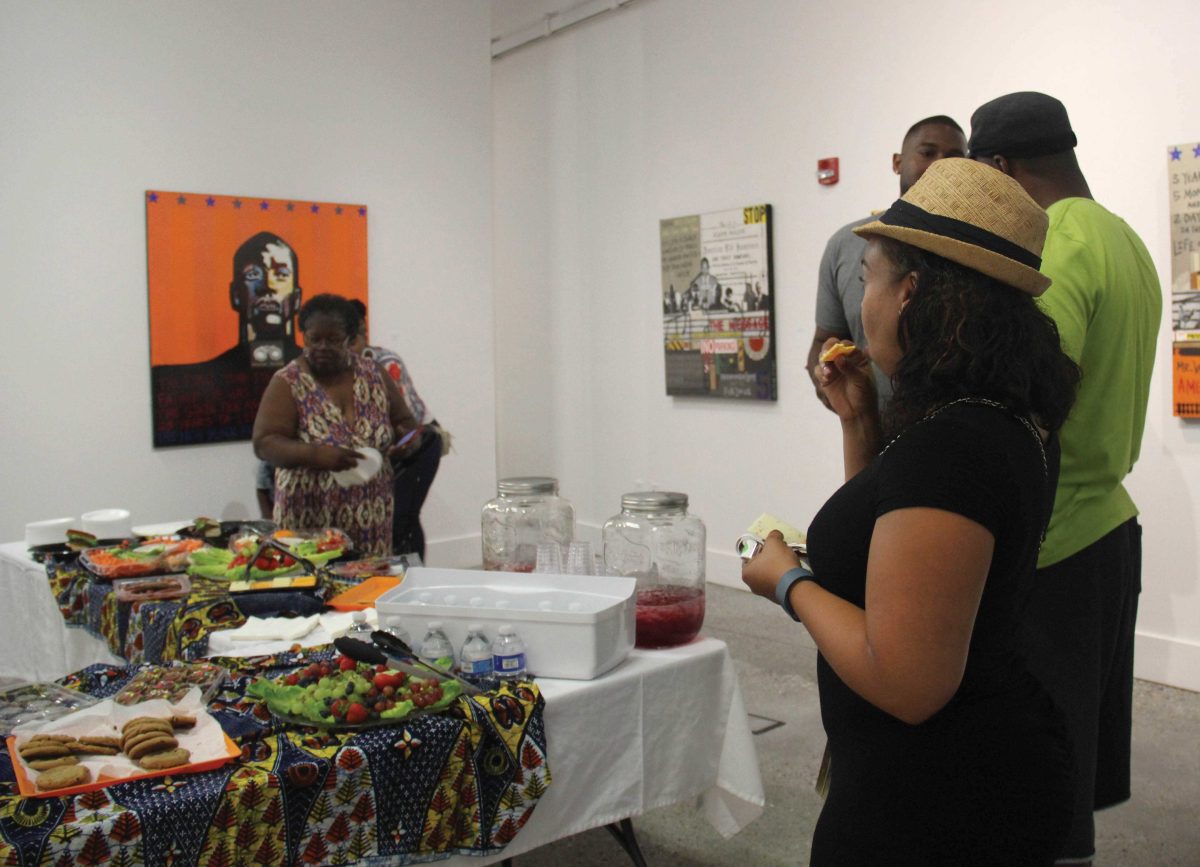Art exhibit influences a positive image on African American community
Cosumnes River College’s summer art exhibit, “The Black Effect: Race and Social Justice” which featured artist Milton Bowens, held its closing reception on Aug. 12.
The event capped a restless summer, rife with media-heavy cases of police brutality, racial inequality and tense public protests. Bowen’s two-hour discussion was his complex answer to why racial tension and inequality exists for African Americans.
“We are invaded with a culture that, authentically, we are all not connected to,” Bowens said. “The reconditioning of respecting ourselves is what has to happen,” he said. Bowens added that the black community lacks a sense self-empowerment because “we just don’t think highly of who we are.”
When everyone views their culture through one perspective, we lose power over our history, Bowens said. People forget or are denied their ancestor’s accomplishments and contributions when they lose our “authentic story,” a source of identity and empowerment.
Bowens grew up without parents in East Oakland and soon discovered a passion for covering train cars and police cars in graffiti. After serving in the military, he went to art school and met a professor who challenged his knowledge of black culture in art history.
“And I was stunned, because I couldn’t engage him in a conversation about any period of art history where African Americans had affected,” Bowens said.
It’s necessary to understand the principles an identity is built upon in order to institute change, said Dean of Communications, Visual and Performing Arts Colette Harris-Mathews. “We can go out and change the things that we want to see change, but we have to have an understanding of the why,” Harris-Mathews said. “To be able to give back to the people, I have to have a true understanding of who I am and what my culture means.”
Bowens challenged the audience’s perception of American history as he listed examples of how African Americans dramatically shaped American society. Wall Street became popular when it was named New York’s first official slave market before investors and businessmen found profit in the stock market, and enslaved African Americans were the primary work force for many early Fortune 500 companies.
Bowens demonstrated how even a small change in grammar can make a huge difference in how people understand black history when he referred to slaves as “African American people who were enslaved.” In this new light, Bowens encouraged them to embrace their culture and be responsible for both their collective cultural accomplishments and their black-on-black antagonisms.
“Everybody gets in an outroar and marches and stands on freeways when one or two or three or four or five accidents happen,” Bowens said. “We have to take that same revolutionary aggression and protest en masse when we’re doing it to ourselves.”
Bowens’ art gives 34-year-old Billy Ward a “more positive self-image, and [I’m] trying to pass that on to my children.”
The artist influenced Ward to “start in the nucleus, influence my community, just be positive and know myself.”
And the only way to resolve systemic racial inequality for black people is to learn respect for ourselves, our histories and our cultures, and teaching these values to our families.
“I have to sleep at night knowing that the work that I produce is going to long outlive me, and I’m not leaving nothing that ain’t putting something positive back into my community,” said Bowens.
“Whether it sells or whether it doesn’t, I know that I’m okay with the messages that I am passing down for history, for my people, and future generations.”

